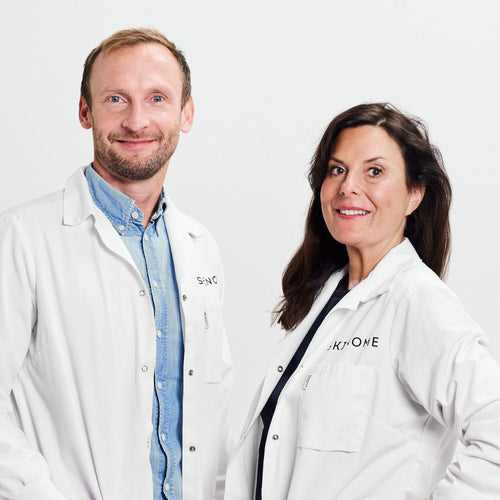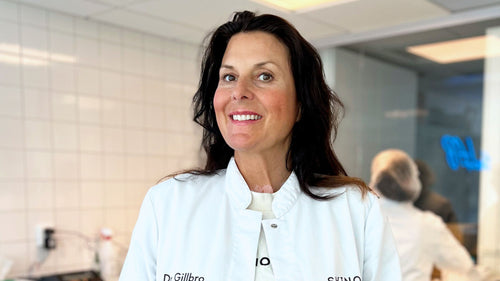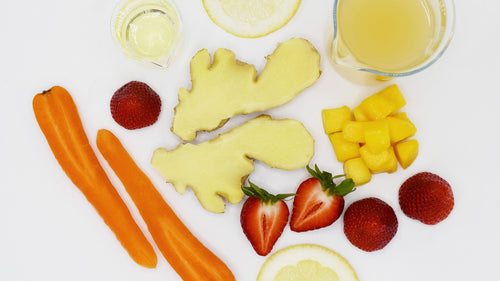Vitiligo
Johanna loved her freckles as a child and likened herself to a cute Dalmatian dog. She simply thought that being unique was only positive. It became all the more difficult in her teens when she developed increased vitiligo on her face. After her studies, Johanna chose to contact the groups in the world that studied the disease, in order to overcome her own. In the end, she came into contact with a research group in England and packed her bags to do a doctorate there for five years. Johanna and the group looked a lot at hydrogen peroxide and how skin affected by vitiligo had an increased concentration of just that. Using a topical treatment that mimicked a certain enzyme, the research team found a way to repigment the spots. Johanna has undergone the treatment herself and got back 95% of the pigment in her face.
The skin care industry and the consumer
Johanna was quickly contacted by the skin care industry in Sweden and started working as a skin researcher at a skin care institute in Stockholm. This led her to question how we produce skin care and became fascinated by consumers' relationship with skin and skin care. People often see their skin as a problem and 70% of European women feel that they have sensitive skin. Why is it like that? Maybe everything we apply to the skin is the problem itself? What caught Johanna's interest and made her go down the path she did was her growing interest in the skin microbiome. In the podcast, Johanna explains in detail what the skin microbiome actually is and how important it is to take care of it. Johanna and Alexander also draw parallels to the intestinal flora and talk about how our most common skin diseases, such as acne and eczema, can have a connection to an imbalance in the microbiome, both in the intestinal flora and the skin flora.
The skin bible and 10-step routines
Johanna's book Hudbibeln has sold 40,000 copies in Sweden alone and has been translated into 6 different languages. It shows how important the skin is to us humans and how little information there actually is out there. We have so much knowledge about, for example, our health and understanding what is written on ingredient lists on food packaging is no art for most of us. If we compare with skin care products, where we obviously have a huge interest, that knowledge is lacking and it is difficult for many of us, who are not chemists, to understand what is on the ingredient lists of our most common skin care products. It is not unusual for a traditional skin care product to contain 50-100 ingredients and considering today's trends around long skin care routines, the skin can come into contact with up to 500 ingredients per day - which we have no idea what effect they actually have on our skin.
In the podcast, Johanna answers several exciting listener questions - maybe just yours?
Listen to the Success Podcast with Johanna Gillbro today, click here !














